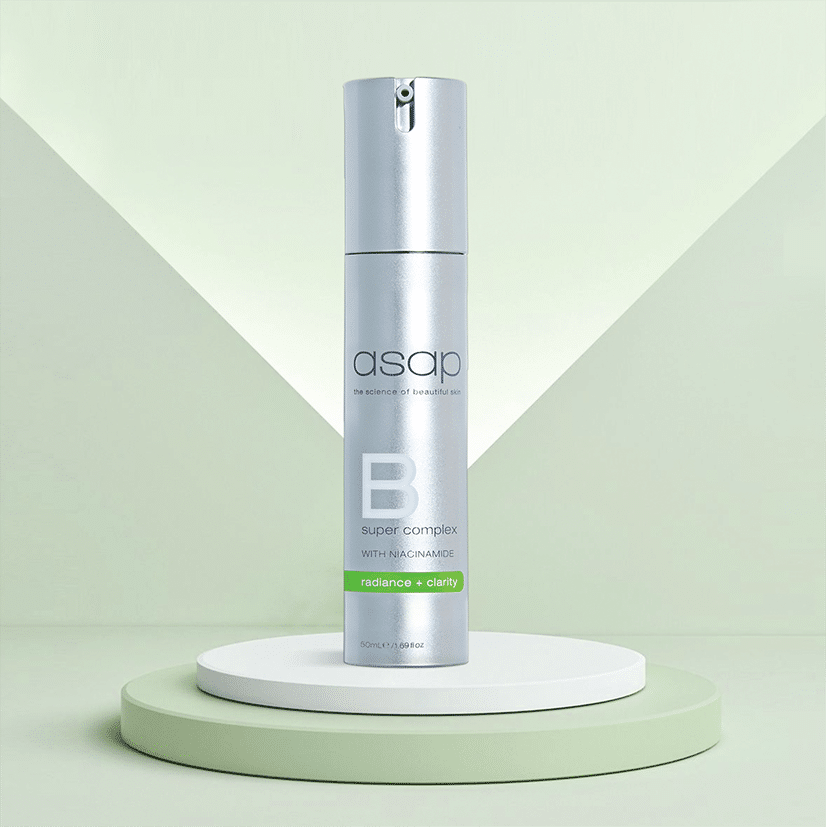How long do dermal fillers last?
Dermal fillers have been growing more and more in popularity to enhance facial features and reduce signs of ageing. As a result, the number of individuals undergoing dermal filler treatments has steadily increased in recent years. However, despite their widespread use, the longevity of the results achieved by dermal fillers remains somewhat uncertain.
Although dermal fillers are designed to provide temporary results, the exact duration of their effectiveness can vary widely. This depends on factors such as the type of filler used, the location of the injection, and your unique physiology. Some people may experience results that last for only a few months, while others may see results that last for a year or more.
Dr Nadja Haub says
In the past, a lot of people had permament dermal filler but it caused too many complications. Due to this, temporary dermal fillers have become a much more popular option. Once the dermal filler is injected, it will gradually dissolve over time. Most people come back after 12 to 18 months to have their dermal filler renewed brecause they notice that it is starting to wear off. But a recent study showed us that the filler may last longer than we actually think. Let’s look at what this could mean for you.
Why don’t you use a permanent dermal filler?
In the past, many people opted for permanent fillers to achieve a more youthful appearance or to enhance certain facial features. However, these permanent fillers often caused numerous complications, such as
- migration (the filler moved to a different place in the face)
- lump formation over months or even years
- infections
- tissue damage.
As a result, the use of permanent fillers has significantly decreased over the years.
Why do you use only temporary dermal fillers?
Nowadays, temporary fillers are the preferred option for those seeking cosmetic enhancement. These dermal fillers are made of materials that are naturally found in the body, such as hyaluronic acid. Over time, the body gradually absorbs the hyaluronic acid, and this makes them much safer than permanent fillers and reduces the risk of complications.
Additionally, temporary fillers can be adjusted or removed at any time. This provides more flexibility and control over the final results. As a result, you can achieve a natural and customized look that meets your specific needs and preferences.
Overall, while permanent fillers were once popular, the numerous complications associated with them have led to the widespread use of temporary fillers instead. The advancements in temporary filler technology have made them a safe and effective option for achieving cosmetic enhancement.

What are temporary dermal fillers?
Hyaluronic acid in dermal fillers is eventually absorbed by the body through a natural process known as enzymatic degradation. Hyaluronic acid is a naturally occurring substance in the body that is broken down by enzymes called hyaluronidases. These enzymes break down hyaluronic acid molecules into smaller fragments, which can be eliminated from the body through the lymphatic system.
When hyaluronic acid is injected into the skin as a dermal filler, the body recognizes it as a foreign substance and sends immune cells to the area. These immune cells release hyaluronidase enzymes that gradually break down the hyaluronic acid filler over time. The speed at which the filler is absorbed can depend on various factors, such as the size of the hyaluronic acid molecules, the location of the injection, and the individual’s metabolism.
The gradual absorption of hyaluronic acid fillers is one of the reasons why their effects are temporary, typically lasting between six months to two years. Some individuals may metabolize the filler faster or slower than others, which can affect how long the results last. Regular touch-up treatments can help maintain the desired results.

How do I know how long my dermal filler lasts?
It is important to note that dermal fillers are not permanent and their effects will gradually wear off over time. Here are some signs to look out for that may indicate that your dermal filler is starting to wear off:
- Reduced Volume: As the filler begins to break down, you may notice a reduction in the volume and fullness of the treated area. For example, if you had filler injected into your cheeks, you may notice that they appear less plump or defined than before.
- Appearance of Wrinkles: As the filler wears off, wrinkles and fine lines may begin to reappear in the treated area. You may notice more prominent smile lines or marionette lines around the mouth.
- Unevenness: As the filler settles and wears off, you may notice an uneven appearance or asymmetry in the treated area.
- Sensation: You may also notice changes in sensation in the treated area as the filler wears off. For example, the skin may feel less firm or less smooth to the touch.
If you notice any of these signs, it may be time to consider a touch-up treatment with your cosmetic doctor to maintain your desired results. However, it is important to wait until the previous filler has fully worn off before receiving additional treatments to avoid overfilling or other complications.
Let’s now have a look at how long dermal filler really lasts
There have been several scientific studies that examine the longevity of dermal fillers. A few of these studies use magnetic resonance imaging (MRI) to track the movement and distribution of fillers over time. In these studies, MRIs are taken before and after filler treatments. On the MR scan, you can see how much dermal filler is still visible after a few months or even years.
One study looked at 14 patients who had a dermal filler treatment in the past. All 14 patients had MR scans to check what had happened to their dermal filler. Interestingly, all of the patients had some dermal filler in their faces after 2 years. And a few of these 14 patients had dermal filler visible on these scans after more than 6 years and one patient even after 12 years.
These studies provide valuable insights into the longevity of dermal fillers. However, it is important to note that the duration of filler can vary widely depending on individual factors such as age, skin type, and metabolism.
Let’s have a look at a few MR Scans
Below, you can see a few MR Scans of a 47-year-old man who had dermal filler. Don’t worry, it will be very easy for you to look at the scans. Just look at the white arrows. Right at the tip of the arrow, you will see a white spot. This is the dermal filler that this man had.
A 47-year-old man
This man had dermal filler for his chin. When you look at the image, you can see a white spot close to the arrow. This is his dermal filler in the chin.
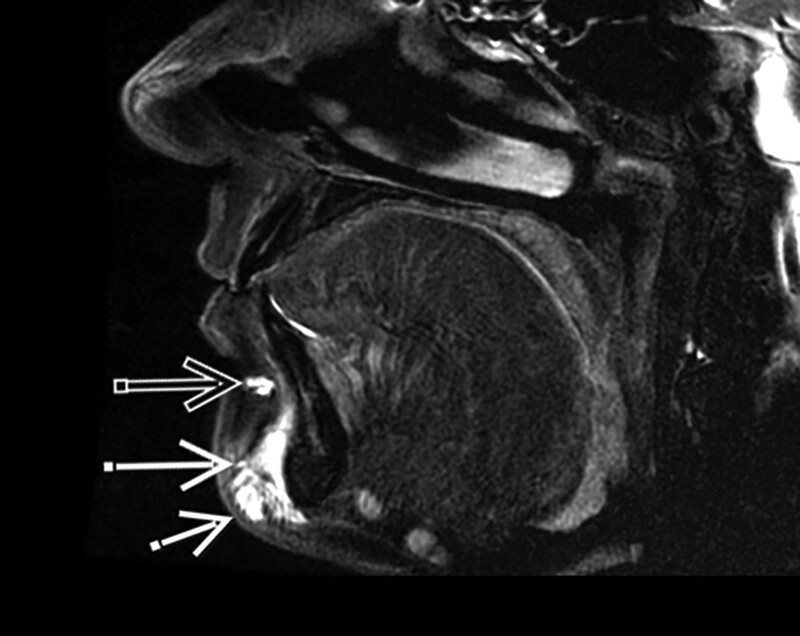
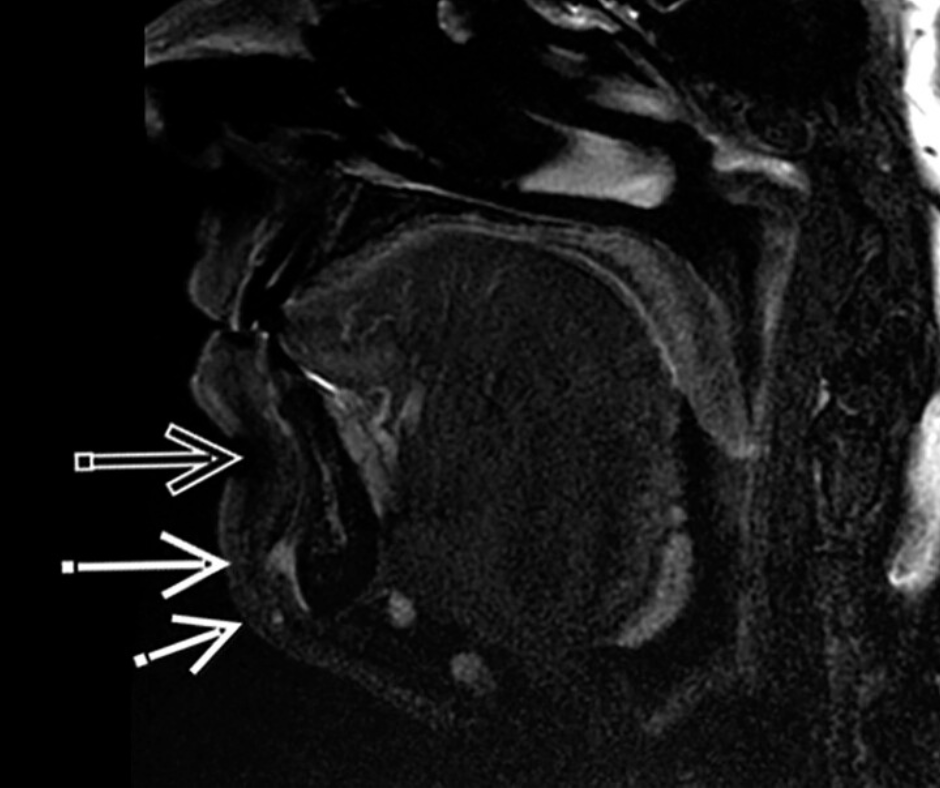
The same man, 18 months later
If you now look at the white arrows, there is no white spot close to the arrows anymore. This means that the dermal filler is not there anymore. It has completely dissolved over 18 months.
The same 47-year-old man
This MR scan shows several white streaks close to the arrow. This is a dermal filler that was injected along his cheeks. To do this, the injector injected small threads of dermal filler under the skin. You can see this as white streaks close to the arrow.
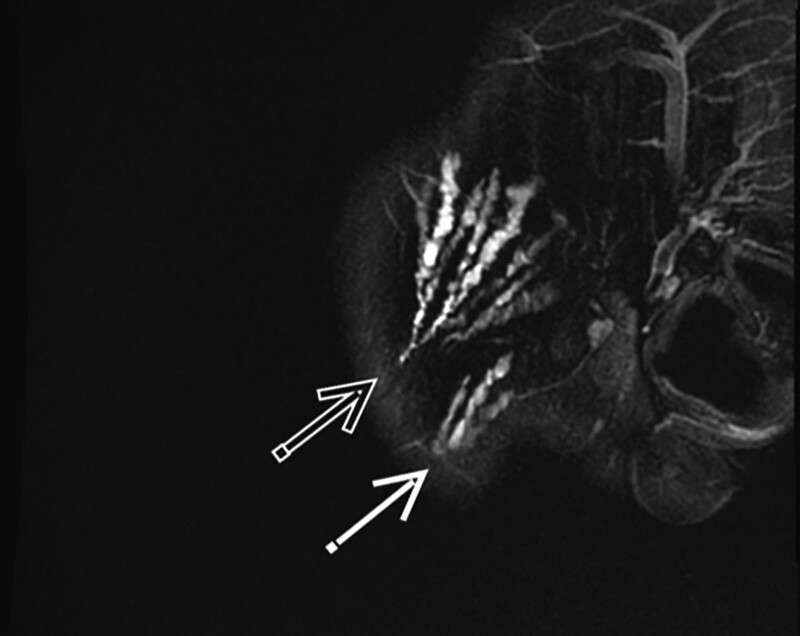
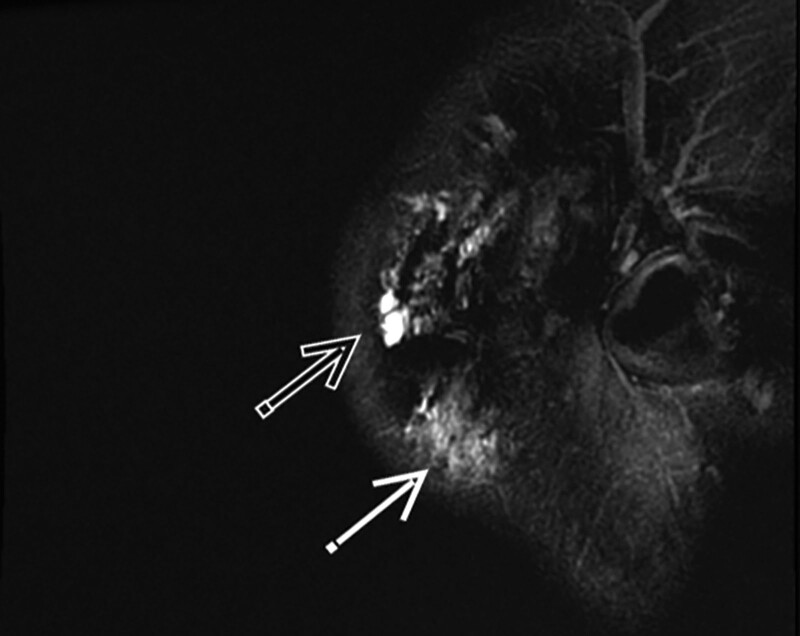
The same man, 27 months later
This is the same cheek and the same man 27 months after he had dermal filler for his cheeks. If you now look at the area close to the white arrows, you can see that there are still a few white streaks visible along his cheeks. This is the dermal filler that has not resolved as yet, after 27 months.
In conclusion
While there is a general consensus in the medical community that most dermal fillers last between 12 and 18 months, the truth is that the longevity of the treatment can vary from person to person.
Factors such as the type of filler used, the injection technique, and individual metabolism can all play a role in how long the treatment lasts. It is difficult to predict exactly how long your dermal filler will last, as everyone’s body processes the filler differently.
That being said, we encourage you to pay attention to your skin and monitor your results as time passes. You may notice that your filler starts to wear off after 12 to 18 months, but this is not always the case. In some cases, the filler may last longer or shorter than expected.
If you notice that your filler is starting to wear off, it is best to schedule an appointment with your injector to discuss your options. They can provide you with expert advice on how to maintain your results and recommend additional treatments if necessary.
Book an appointment with us
We understand that choosing to undergo any cosmetic treatment can be a big decision. We can assure you that booking in for dermal filler with a qualified cosmetic doctor is a safe and rewarding experience.
Firstly, let us explain why choosing a qualified cosmetic doctor is essential. A qualified cosmetic doctor has extensive training in facial anatomy and physiology and specialized training in injectable treatments like dermal fillers. This means that they can provide a higher level of expertise, skill, and safety.
At our clinic, all treatments are performed by a doctor. Our doctors take the time to understand your needs and answer any questions you may have. After that, we will tailor your treatment to achieve the best possible outcome.
Dermal fillers can help enhance your natural beauty, restore volume and refresh your skin. They can also be used to contour and sculpt your facial features. This results in a more youthful, refreshed, and rejuvenated appearance.
We encourage you to take the first step towards achieving your beauty goals by booking a dermal filler treatment with one of our qualified cosmetic doctors. You can be confident that you will receive personalized care, expert advice, and natural-looking results.
If you would like to visit us for a free initial consultation, please contact us here.

Plast Reconstr Surg Glob Open. 2022 Apr; 10(4). Mobin Master, FRANZCR * and Stefania Roberts, FACP
* and Stefania Roberts, FACP . Long-term MRI Follow-up of Hyaluronic Acid Dermal Filler.
. Long-term MRI Follow-up of Hyaluronic Acid Dermal Filler.




